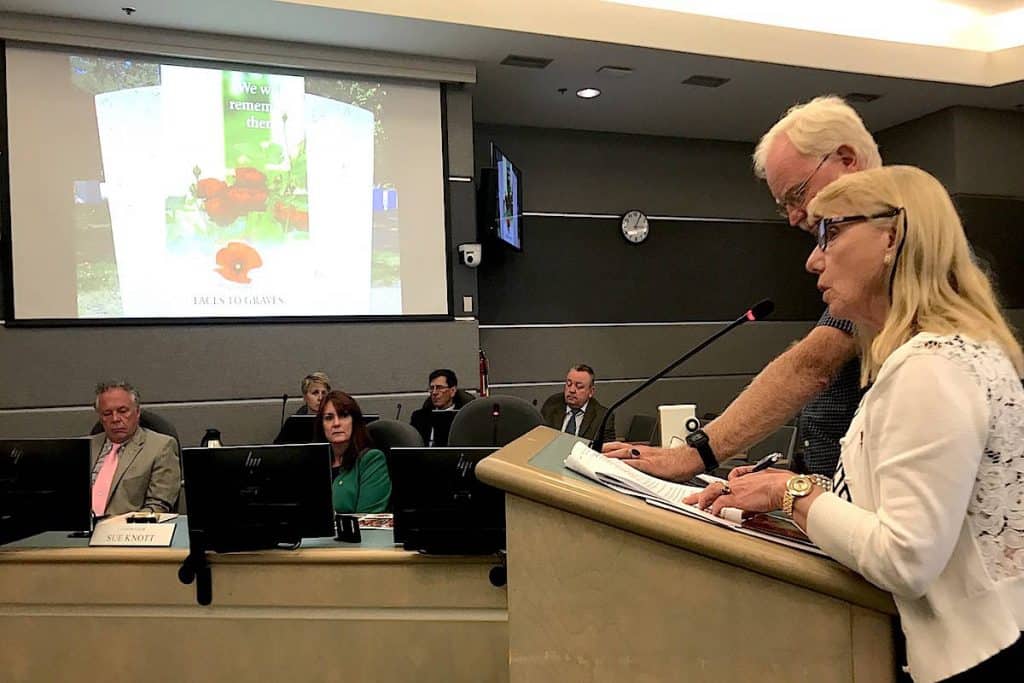
Original Source: The Chilliwack Progress
Planning already underway to mark the 75th anniversary of the event
As events marking the 75th anniversary of the Battle of Normandy wind down, members of the Canadian Dutch community are planning to celebrate the 1945 liberation of the Netherlands.
A delegation representing the Dutch Liberation Canadian Society 2020 was at Chilliwack city hall this week, informing council about its plans to recognize this important historic event and the unique bond it created between Canada and the Netherlands.
“Our mission,” explained society president Adriana Zylmans, “is to thank and honour Canada and its veterans, including its soldiers, sailors, airmen the nurses and the military personnel for their contributions in ending the war in Europe in 1945.”
Canada played a key role in defeating the Nazi army in Holland, and relieving a famine that claimed more than 18,000 lives during the “Hunger Winter” of 1944/45.
Following the end of the Battle of Normandy in late August, Allied troops pushed northward, securing vital seaports along the way. Most important was the port city of Antwerp, which promised to keep the Allies supplied as they wheeled east into Germany.
However, although the Allies controlled the Belgian city, the Germans still controlled the estuary linking it to the sea.
The Canadians were tasked with the difficult job of securing the Scheldt Estuary, which they finally did in November of 1944 at a cost of more than 6,000 Canadian casualties.
With the supply line open and Allied troops massing for the final push across the Rhine River, Canadians were again asked to press northward and rid the Netherlands of her Nazi occupiers.
Relief couldn’t come fast enough. An early and unusually harsh winter had exacerbated an already critical shortage of food and fuel. As the winter deepened, the famine took its toll.
The war in Europe was nearing its end in April when Canadian troops pushed further into Holland. But the Nazis were hardly a spent army. The fighting – at times house-to-house – was harsh. When it ended, more than 7,600 Canadians were dead.
Recognizing that sacrifice is the rationale behind the formation of the Dutch Liberation Canadian Society – a coalition of Dutch groups in Canada, along with the Royal Canadian Legion
“We want to say, ’Thank you, Canada’ one more time,” said Zylmans.
Several events are planned to commemorate the event, including a candlelight service on May 2, 2020 in Chilliwack and 40 other communities around the province.
The society is also working with local school groups to encourage students to plant tulips this fall that will bloom in the spring.
The public is also invited to purchase and plant “Canadian Liberator Tulips,” with proceeds from the sales going to the Royal Canadian Legion.
“Our goal is to plant as many red tulips across the country in cities, towns, villages, parks, and home gardens, to create an atmosphere of overwhelming thanks and appreciation of Canada and its veterans,” the group said.
But perhaps the most ambitious plan is the creation of a digital “virtual memorial” of the soldiers buried in the Groesbeek Canadian War Cemetery in the Netherlands.
Groesbeek is the largest of three Canadian cemeteries cared for by Dutch citizens. The goal of the project – called “Faces to Graves” – is to collect photographs and stories about all the Canadian soldiers buried there to create a digital archive.
For more information about the Dutch Liberation Canadian Society, go to www.dutchcanada2020.com
